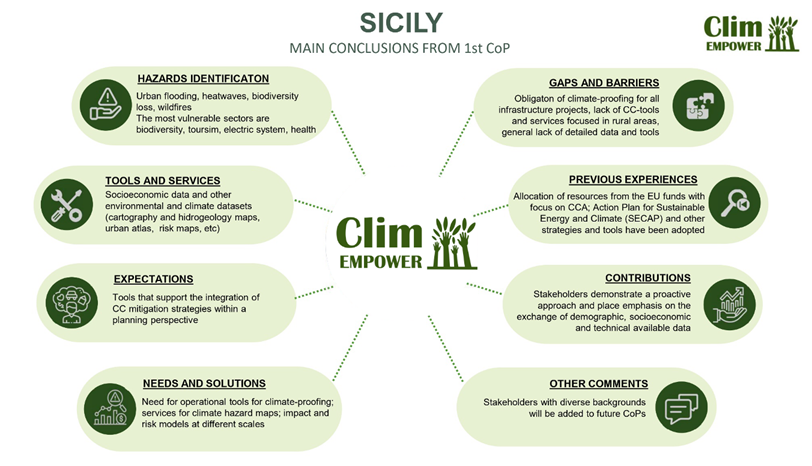Italy
Sicily, the largest island in Italy, encompasses an area of 25,832.39 square kilometres and a population of 4,782,457 inhabitants as of 2022. Significantly, Sicily’s regional gross domestic product (GDP) contributes 5% to the national GDP, primarily propelled by the key economic sectors: agriculture, industry, and tourism.
Sicily is increasingly susceptible to the adverse impacts of climate change, particularly evident in its urban area. Urban areas emerge as focal points of vulnerability, marked by heightened exposure to climate change-induced hazards. Instances of severe heat waves, exemplified by a noteworthy temperature of 48.8°C recorded in August 2021, as well as pluvial and coastal flooding events, evidenced by precipitation levels ranging from 150 to 300 millimetres in 2021, underscore the pronounced vulnerability of Sicily’s urban landscape to climate change. The magnitude and frequency of extreme temperatures and precipitation events have increased in recent years and are expected to further aggravate in the future.
The setting of the CoP in the Sicily region is characterized by involving institutional stakeholders, particularly, representatives of public entities at both the regional and metropolitan levels. To engage stakeholders effectively, it was decided to organize two informative meetings (November – December 2023) and a third meeting to start the official work of the CoP (February 2024).
The prioritized hazards identified by CoP stakeholders are Urban Flooding and Heat Waves.
In the image below you can find more information and the key points that have been identified:

